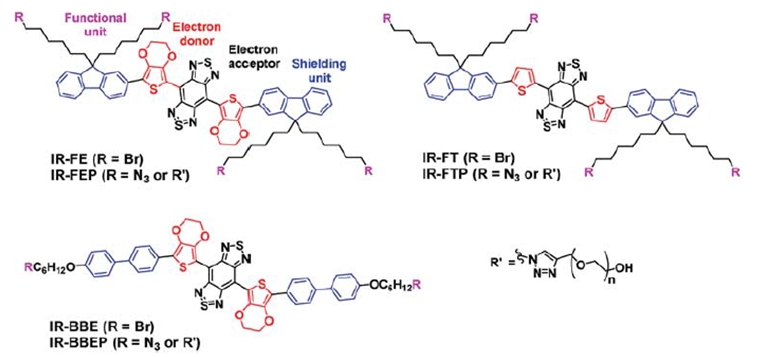Search Product
Structure Search
Search
Advantage Products
Location: Industrial Info
EDOT—the key to improving quantum efficiency of fluorescent molecular probes
2017-11-10
来源:转载自第三方
10 November 2017
Keywords: Molecular fluorescence probe, EDOT, Three-dimensional staining
3,4-ethylenedioxythiophene (EDOT) is a monomer of stable conductive polymer PEDOT, excellent electrochromic properties, making it a research hotspot in the field of functional materials. Recently, some researchers found that EDOT is also the key to improving the quantum efficiency of molecular fluorescent probes. EDOT has been designed and synthesized to high-molecular-yield molecular probes and successfully applied to the study of three-dimensional staining of biological tissues.
Fluorescence imaging is widely used in biomedical research. Compared with the traditional near infrared (750~900nm) fluorescence imaging technology, deep tissue infrared (1,100~1,700nm) fluorescence imaging technology significantly reduces tissue scattering and water absorption, with high tissue penetration and high resolution. However, one important bottleneck in the development of this technology is the lack of fluorescent probes with high brightness and high biocompatibility.
This time, researchers [1] designed a new type of high-efficiency fluorescent molecular probe: the fluorescent molecule is composed of electron-shielding group, donor group and acceptor group; the target molecule is composed of EDOT as electron donor, and alkyl chain substituted fluorene is a blocking group. Compared with the thiophene electron donors, the molecular framework has a larger torsion angle and a more coordinated surface electrostatic potential distribution, which can effectively protect the acceptor benzodithiadiazole and prevent it from interacting with solvent molecules or other molecules. At the same time, the combination of alkyl chain-substituted fluorene and the reversal of the molecular framework can reduce the non-radiative quenching caused by aggregation.

Subsequently, the researchers [2] further synthesized a series of fluorescent molecules to achieve the multi-color molecular three-dimensional tomography imaging simultaneously across the near-infrared first and second window (800~1700nm).
This is the organic fluorescent molecular probe of water-soluble near-infrared second-region with the highest quantum yield in the aqueous phase reported so far, and EDOT is a key factor in maintaining high quantum efficiency in aqueous solution. Compared with the previously developed fluorescent probes, the new probes have advantages of high quantum yield, rapid imaging and deeper penetration, which can "guide" the tumor operation.
References
[1] Qinglai Yang, Zhuoran Ma, Huasen Wang, et al. Rational Design of Molecular Fluorophores for Biological Imaging in the NIR-II Window. Adv. Mater., 2017, 29, 1605497.
[2] Shoujun Zhu, Qinglai Yang, Alexander L. Antaris, et al. Molecular imaging of biological systems with a clickable dye in the broad 800- to 1,700-nm near-infrared window. PNAS, 2017, 114, 962.
[2] Shoujun Zhu, Qinglai Yang, Alexander L. Antaris, et al. Molecular imaging of biological systems with a clickable dye in the broad 800- to 1,700-nm near-infrared window. PNAS, 2017, 114, 962.
Related Links: EDOT
Edited by Suzhou Yacoo Science Co., Ltd.
如果涉及转载授权,请联系我们。












